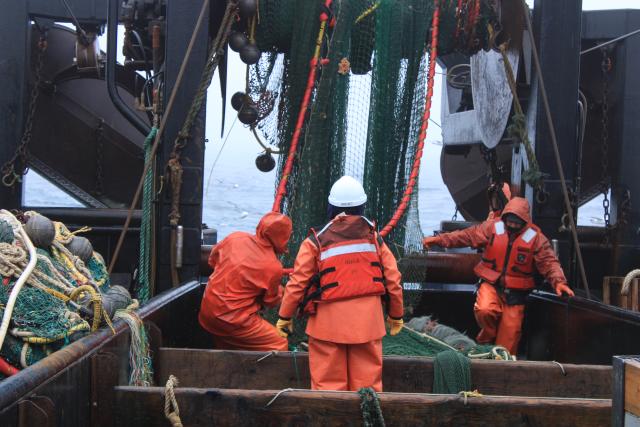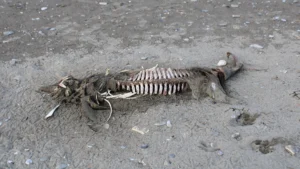NOAA is halfway through its annual bottom trawl survey of the Bering Sea. While it has no official data to report yet, the lead research biologist for the NOAA Fisheries Bottom Trawl survey said this year features new innovations. During a Strait Science presentation, Duane Stevenson of NOAA shared about the trawl survey’s increased focus on collecting environmental data.
“We’re also trying to improve our collections of things like salinity gradients in the water column, light data collections, and then of course we do weather observations as well. And these environmental data streams are something that are getting a lot more interest, and so we are trying to increase our capabilities as far as those things are concerned,” Stevenson said.

Special projects for this year’s survey include Pacific Cod Tagging, investigations into cod and pollock fish condition, herring collection and an assessment of the levels of saxitoxins in algal blooms. Stevenson pointed out that the last project will provide important data for the benefit of subsistence users.
“We are really interested in trying to find out more information about the levels of saxitoxins that might be present in the Northern Bering Sea, so that we can warn people if there are problems, so that we can try to predict when there might be problems, so that we can just learn more about the spread of these algal blooms,” Stevenson said.
In addition to projects at sea, NOAA is also trying to make the data collected in these surveys more easily accessible to the public. Stevenson provided links to websites such as Fisheries One Stop Shop and DisMAP for users to check in on the survey’s findings.
Compared to data taken from previous trawl surveys, species’ such as Pacific cod and Walleye pollock seem to be doing well and exhibited a healthy population size in the Northern Bering Sea, Stevenson said. But species such as saffron cod and snow crab have declined dramatically over the past few years in the Northern and Eastern Bering Sea.
Based on initial data from the Eastern Bering Sea Survey, as well as projections, Stevenson predicted that this year would in general have colder ocean temperatures than last year and include a larger cold pool in the Bering Sea.
NOAA finished the Eastern Bering sea portion the week of August 3 and are just beginning the Northern Bering sea portion of the survey.
Visit the NOAA website to view the trawl survey’s preliminary results in real-time.
Image at top: Members of Eastern Eastern Bering Sea Bottom Trawl Survey team working on deck of survey vessel. Photo courtesy of NOAA Fisheries. Used with permission (2022).





